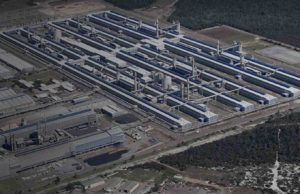 Holden’s Port Melbourne design team have designed a new concept EV for General Motors, known as the Chevrolet Bolt.
Holden’s Port Melbourne design team have designed a new concept EV for General Motors, known as the Chevrolet Bolt.
However, here in Australia, Holden is unable to sell its big brother – the Volt – and is unlikely to offer either the Volt or Bolt in Australia in future.
The Volt sells well in the US where it is quite keenly priced, after federal subsidy, at $US27,500. But in Australia there is no supportive policy and the price is prohibitive at $A60,000 for a vehicle that is similar to a $A30,000 Holden Cruze in terms of appointment and size. Result: little take-up – sales in 2014 of the Volt were just 132 vehicles in Australia versus 23,000 in the US.
It’s not at all clear whether the Australian-designed Bolt will be manufactured in the future – concept cars often do just that: remain concepts.
The Bolt is a bold extension of GM/Chevrolet’s previous PHEV-only strategy as it is a pure BEV – i.e. a battery (only) electric vehicle, not a plug-in hybrid like the Volt PHEV. A PHEV has a petrol generator on board to re-charge the battery en route, if required; the Bolt BEV has no petrol generator.
The Bolt has good range of 320km on a single charge which sensibly addresses range anxiety. To achieve that range, it will have to carry around 50 kWh of battery. It may be priced around USD$30,000 for US purposes, post-subsidy (if produced in the future – possibly by 2017) and so the expected declines in battery costs must have been factored into planning.
The big question is why GM is considering adding a BEV to their stable. The Nissan Leaf has a smaller range (180 km) and is $10,000 cheaper; the BMW i3 BEV has a range of just 80km but is pricey. So the strategy may be aimed at competing with the 2017 Tesla Model 3 which is expected to target a similar price point and range. If so, will the GM design match up to Tesla’s design?
Tesla has welcomed GM’s Bolt as it wants to see more manufacturers introduce BEVs in order to normalize the technology with buyers and also create demand for more public re-charging facilities.
GM’s Melbourne-based design team is expected to be retained after Holden closes its factory doors. However, their specialty is really big cars, like the Buick Avenir which they also designed and which was also launched yesterday in Detroit.
Possibly being given the opportunity to design a BEV from the ground up is a signal that GM is serious in retaining their Melbourne team and wants to give them the opportunity to work with emerging technologies in order to evolve their skills and retain their loyalty.








